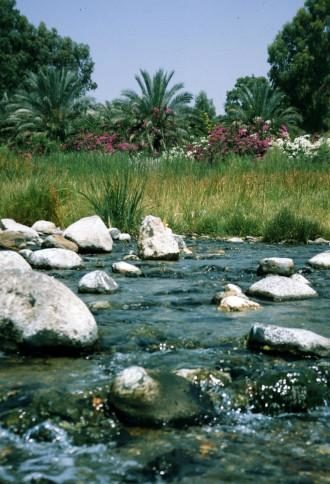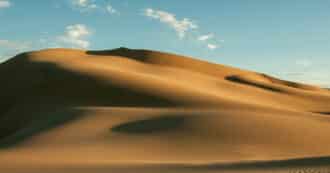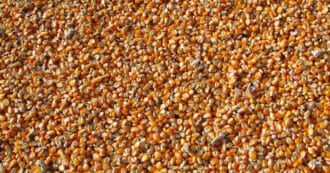By Aryeh Ronay – The Old Testament gets its name from its relationship to “The New Testament”, but for Jews, it’s called “The Hebrew Bible”, “The Bible” or in Hebrew, “The Tanakh.” The name “TaNaKh” is an abbreviation for “Torah,” “Nevi’im” and “Ketuvim.” The Hebrew Bible is a collection of works stretching all the way back from Creation until the return of the Jewish people to Israel after the Babylonian exile.
The Five Books of Moses: The Torah
The Torah, or Pentateuch, is composed of the Five Books of Moses: Genesis, Exodus, Leviticus, Numbers and Deuteronomy. These names come from Greek, as does the name Pentateuch, meaning “five scrolls.”
Broadly speaking, the Torah begins with God’s creation of the universe, the history of humanity, the history of the Hebrew people, enslavement in Egypt, liberation, receiving the Torah, building a tabernacle for God, and preparation for the twelve Israelites tribes to enter the land of Israel.
The Connection of The Land and the People of The Old Testament
The story of the Israelite people is deeply connected to the promised land, the land of Israel. During the 3,000 years since the giving of the Torah, the Jewish people have lived as both a physical people in the land of Israel and as a nation exiled and scattered, but with their hearts and prayers attuned to the land of Israel.
The Bible, and the Torah within it, are more than just general wisdom books. They are about a particular people’s relationship with a particular land. Rather than this being a drawback, today, more than ever, we recognize that we need to “think globally and act locally.” As one of the oldest and most resilient indigenous peoples, the Jews have much to teach the world about relating to land. Perhaps this strong relationship to the land is the reason that Israel is one of the only nations that’s gaining trees instead of losing them. Jews recognize that the land of Israel is not just their promised land, it’s their children’s promised land, and it’s on their shoulders to protect it for their children’s sake.
The Books of the Prophets: Nevi’im
The second section of books in the Old Testament covers the time from the entrance into the land of Israel until the exile to Babylon, and can be further divided into three sections. The first section, The Former Prophets, includes Joshua, Judges, Samuel and Kings. They are followed by The Latter Prophets, Isaiah, Jeremiah and Ezekiel. Finally, there are The Minor Prophets, including Hosea, Joel, Amos, Obadiah, Jonah, Micah, Nahum, Habakkuk, Zephaniah, Haggai, Zechariah, and Malachi.
One of the most fascinating facts about the prophets is that almost all of them failed. Again and again they attempted to change the hearts and minds of their contemporaries, but none of them succeeded— except for one. While each prophet waxed poetic about the sins of the nations and their need for repentance, Jonah achieved what no other prophet could in a few short words. “Forty days more, and Nineveh shall be overthrown,” (Jonah 3:4), Jonah proclaimed to the city of Nineveh, and from the highest dignitary to the lowest animal, the entire city repented, and were saved from destruction by virtue of their repentance.
Considering how much effort we invest in thinking about and sharing doomsday prophecies concerning Earth, climate change, sea levels rising, species destruction and all the other ills, perhaps we should think more about Jonah’s technique. When it comes to changing the world, less is more. If we can find a few choice words, everything can be transformed.
The Poetic Books: Ketuvim
The last section of The Old Testament can be divided into three smaller sections.
Poetic Books of The Old Testament
Psalms, Proverbs and Job are the poetic books, but they are are also called Sifrei Emet ( Emet אמ”ת, the Hebrew for “truth,” is an acronym of the titles in Hebrew, איוב, משלי, תהלים). Some Christians have a wider definition of the “Poetic books” and the Old Testament in general, and have the following list:
- The Book of Job
- Psalms
- Proverbs
- Ecclesiastes
- Song of Songs
- Wisdom (only included in the Catholic and Orthodox canons)
- Sirach (only included in the Catholic and Orthodox canons)
These last two books are considered Deuterocanonical, meaning the Catholic Church, the Eastern Orthodox Church, the Oriental Orthodox Churches and the Assyrian Church of the East consider these books canonical books of the Old Testament, whilst the Protestant denominations don’t. These wisdom books have much to say about living in sync with nature and our fellow humans.
The Five Scrolls of The Old Testament
The next five books are known as the five books Song of Songs, the Book of Ruth, the Book of Lamentations, Ecclesiastes, and the Book of Esther are collectively known as the Ḥamesh Megillot (Five Scrolls). These are designated as “authoritative” in the Jewish canon, with the latest parts having dates ranging into the 2nd century BCE. These scrolls are traditionally read over the course of the year in Jewish communities.
These books are read aloud in the synagogue on certain holidays, which are written in parenthesis after each book.
- Shīr Hashīrīm (שִׁיר הַשִּׁירִים) – Song of Songs, also known as Song of Solomon (on Passover)
- Rūth (רוּת) – Book of Ruth (on Shavuot)
- Eikhah (אֵיכָה) – Book of Lamentations (on Tisha B’Av)
- Qōheleth (קֹהֶלֶת) – Ecclesiastes (on Sukkot)
- Estēr (אֶסְתֵר) – Book of Esther (on Purim)
“Song of Songs”, in particular, is full of natural imagery and metaphors. It is in the Edenic-like garden that their love flourishes. But in the city, they cannot reach each other, the maiden searches for her lover to no avail. It is interesting to consider the significance of the effects of our environments on our relationships and the extent to which just as plants can have difficulty flourishing in the city, so can humans and human relationships.
More books of The Old Testament
The last books in Ketuvim, written in both Hebrew and in Aramaic, are Daniel, Ezra and Nehemiah. In these books we read about the Babylonian captivity and the return to Zion.
Just as Song of Songs stood out among the five scrolls for its nature imagery, so does the Book of Daniel in this last set of books. In the Book of Daniel, there are natural materials like gold, silver and bronze, a prophetic dream of a tree being cut down, humans turning into beasts, humans being thrown to lions, beasts emerging from the sea, goats fighting with rams and most popular among vegans—Daniel’s raw, plant-based diet.
The Book of Daniel
The natural imagery in the book of Daniel demonstrates a chaotic world, mirrored by the chaotic Babylonian government that vacillates between honoring and attacking the local Jewish minority. However, Daniel and his companions who are are able to subsist and thrive on vegetables and can survive even the lions’ dens, represent a different relationship with nature. Daniel and his companions show that humanity can coexist with nature in a healthy and sustainable manner, without being subsumed by the chaos that surrounds them.
The Book of Daniel, placed at the end of the Old Testament, provides a framework for the Jewish people for surviving in a world of temperamental animals and tyrants. Major empires from Babylon to Rome, from the Third Reich to the USSR have taken advantage of the Jews and then tried to get rid of them. These empires collapsed, while the Jewish people continue to live and thrive.
The Jews, more than any other people, have shown what sustainability means, by lasting longer than any other civilization, all while exiled from the Jewish homeland. The Jews show the world that sustainability doesn’t have to start when we’re comfortable at home, sustainability is something we can take with us wherever we go. Today, tiny homes are very much in vogue. The Jews, through the Old Testament and its commentaries have brought with them wherever they’ve lived a “tiny civilization.”
Chronicles: The Last Book of The Old Testament
As its title describes it is a chronicle, often split into two parts, detailing the history of the Jewish people from the time of the first person, Adam, to the proclamation of King Cyrus the Great that the Jews should leave Babylonian exile and return to live within Israel’s borders.
The Significance of The Books of The Old Testament
This summary of the main events of the Old Testament is a fitting end to the Hebrew Canon. The Hebrew Bible, like the Hebrew calendar, is based on cycles. But the idea is not to go around and around on an endless carousel, but rather to climb higher and higher with each rotation. As Joni Mitchell sang “the seasons, they go round and round,” but we are not meant to uselessly spin in circles. Rather, the Old Testament call us to climb higher and higher with each revolution, reaching our potential by improving ourselves and learning from the mistakes of the past.
This is why the Bible is so significant for every Jew, Christian and Muslim. The Bible is a book of wisdom, written to connect humanity to God’s perspective. Whether one is reading the Bible in Greek, English, Hebrew or any other language, the Bible can help humanity to gain a broader perspective on the world and our place in it.
In this time of ecological crisis, fueled by a fast-paced consumer culture, we need now more than ever to slow down, notice the cycles of nature and history and chart our course towards a better world.
* Featured image source







